如果要看本篇的中文版,請點 這裡
It is quite popular among young cute ladies to take lovely photos with this upward-looking position. Tof has studied this phenomenon for some time and discovered that there is a reason to that. The advantage of this shooting angle is that it can capture “cute thin cheek” and “beautiful smile arc,” which many girls enjoy.
The first reason was easy to understand, but the smile arc, why?
Frush and Fisher first proposed the concept of smile arc in 1958. They suggested that the line between incisal edges of anterior teeth and cusp tips of posterior teeth needs to be consonant and parallel to the upper edge line of lower lip at smiling, as shown in this photo:
Naturally, the opposite to a consonant smile arc is the unappealing “Reverse Smile Arc” :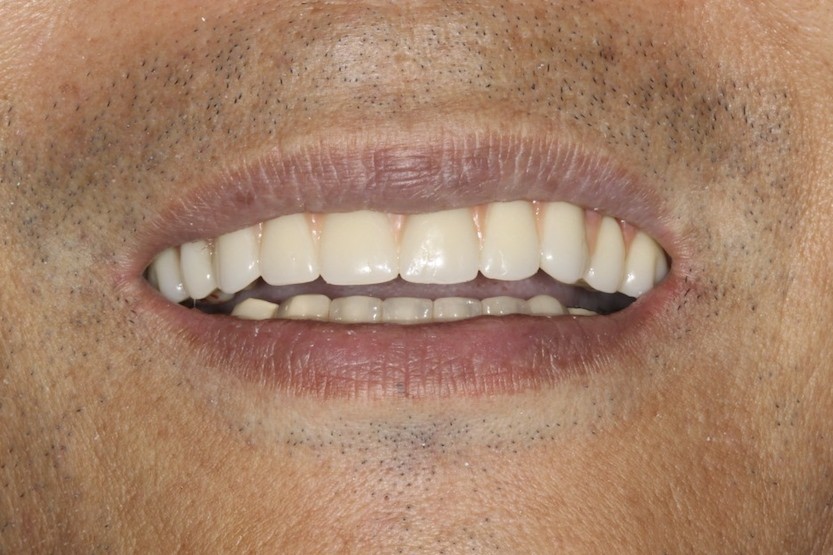
Tof often addresses the teeth with consonant smile arc as “smiling teeth” and the teeth with reverse smile arc as “angry teeth.”
In order to understand the pros and cons of “smile arc”, we need first to understand the philosophy behind. Take this unfinished All-on-4 immediate denture model as an example: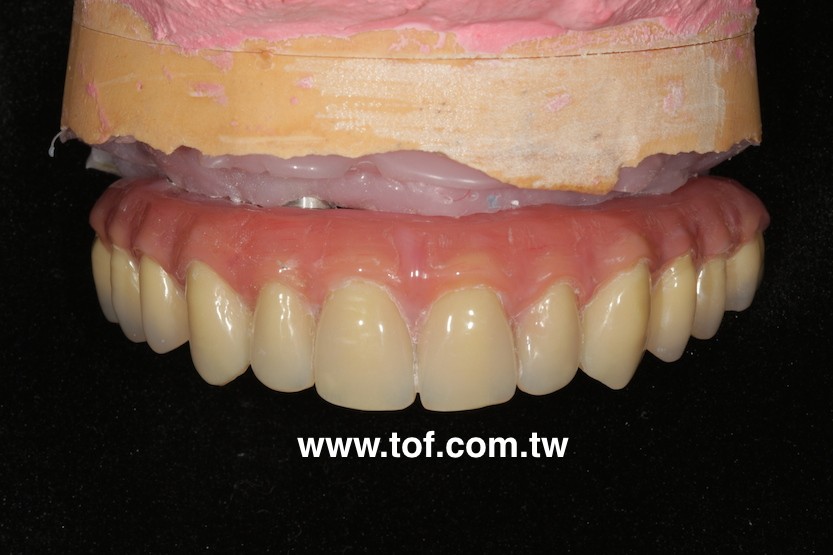
Manipulating smile arc is easy. By altering viewing angle, tof can easily create a smile arc, a straight smile line, or a reverse smile arc: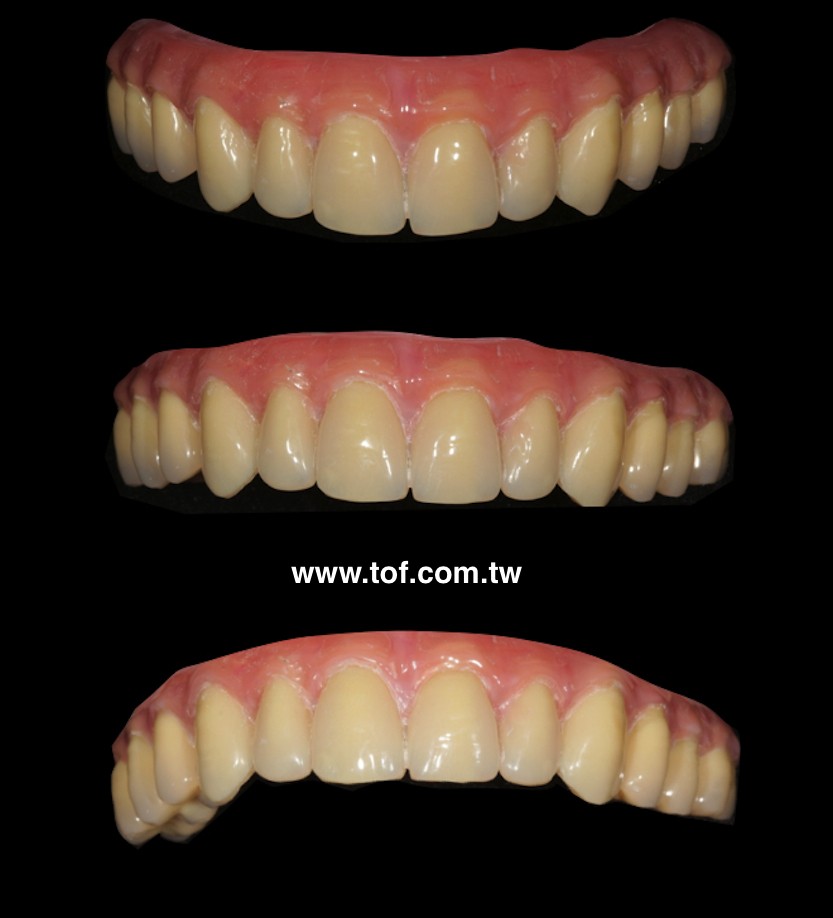

In other words, the viewing angle determines whether this tooth setup is a smile arc or a reverse smile arc. If this concept is correct, then creating an attractive smile becomes easy. Smile arc can be manipulated by adjusting the inclination of the occlusal plane: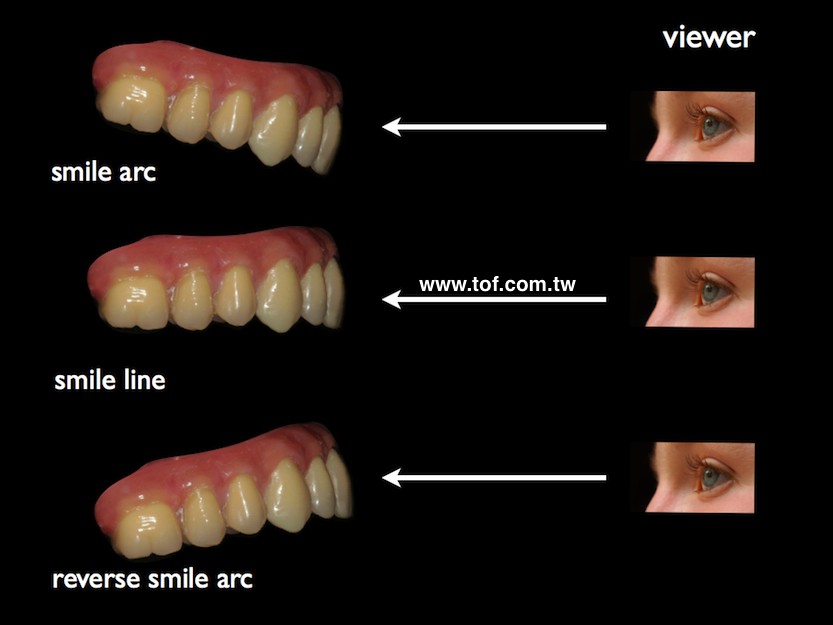
Simply put, if prosthodontists, orthodontists or esthetic dentists wish to create a smile arc easily, then it is necessary to create a correct occlusal plane. It’s especially true when dealing with full mouth rehab cases, that determining a suitable occlusal plane fully relies on the restorative doctors.
Nonetheless, we have been taught from school that occlusal plane angulation was believed to be parallel with the Camper’s plane (the line connecting ala to tragus). Let us check what The Glossary of Prosthodontic Terms say: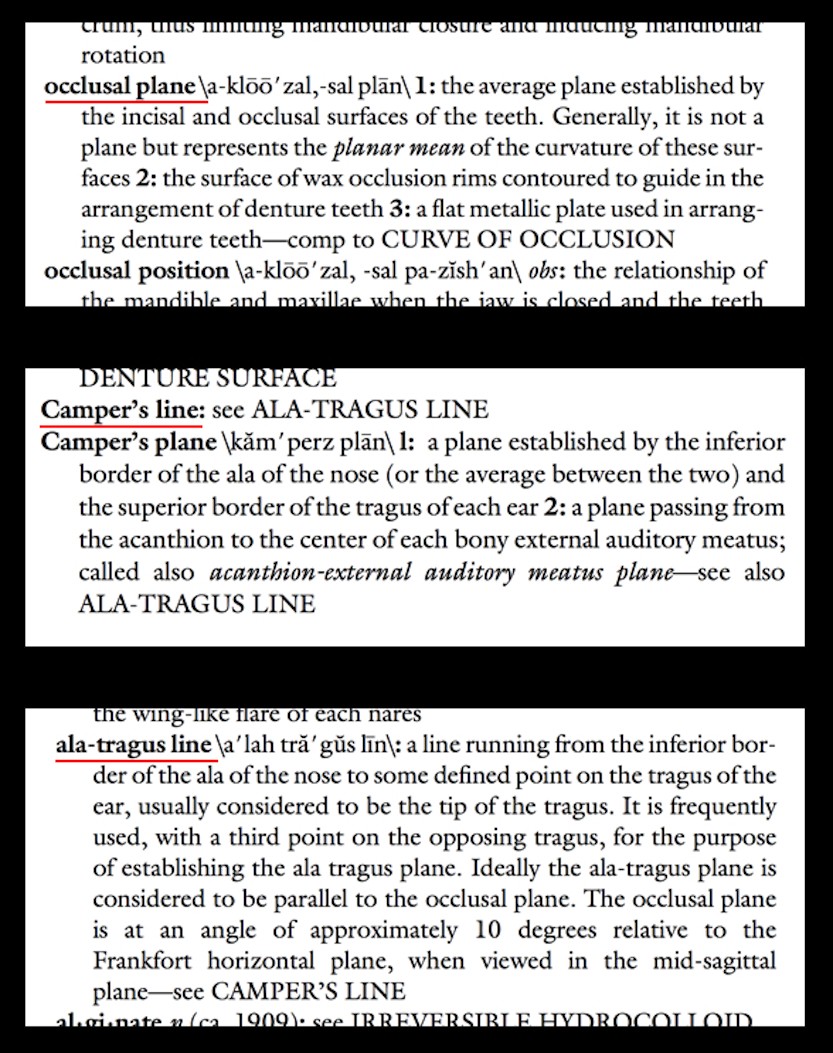
From above, we learned that the occlusal plane and Camper’s line stay in relative parallel. If I am unaware of the occlusal plane of a patient, then I shall take Camper’s line as a reference. On the other hand, Campers line readily forms a 10° angulation from Frankfort “horizontal” plane. Until now, everything seems straight and clear, right?
However, there is an issue. The occlusal plane chosen according to Camper’s plane does not guarantee a beautiful smile arc, particularly when your clients and his loved one are in a position of looking at remote areas with passion (as disclosed in the photo below).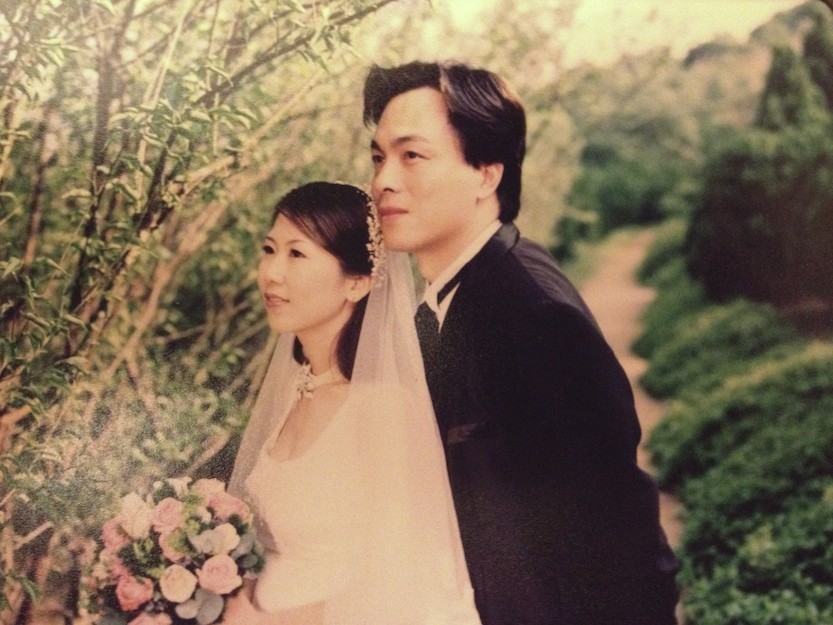
How did that happen?!
The reason lies on Frankfort horizontal plane (FH plane)。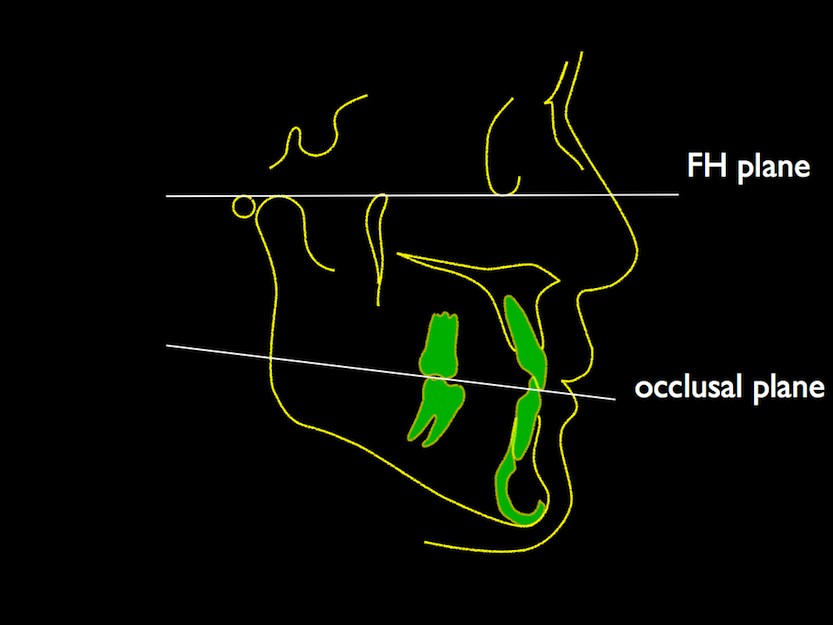
In 1991 Pitchford published a very important research on JPD. He discovered that when we sit straight up and stare at the remote side, Frankfort “horizontal” plane is actually not horizontal, but forms an elevation in 8~13° to the horizontal line.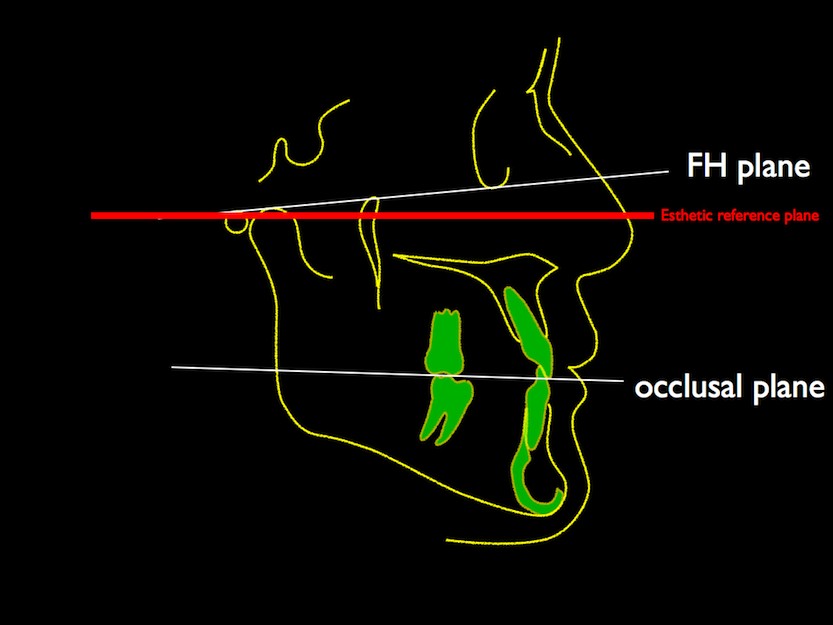
In other words, if we use Camper’s line as a reference to acquire occlusal plane and when our All-on-4 clients looks far out straight (i.e. when two people are having a face to face conversation), Frankfort plane will be elevated (as seen in the aforementioned figure). Guess what? Your occlusal plane will coincidentally be nearly horizontal, indicating a straight smile line to the viewers.
Hence, it is not difficult to understand why “head-upward shot” is popular among young teenage girls in Asia, because they all seem to smile particularly happily and everyone has a perfect smile arc.
The following protocol is recommended to predictably produce consonant smile arc for All-on-4 rehabilitation involving maxillary arch:
1. First, determine the location of maxillary incisal edge (please refer to this article to find out how to determine incisor edge position based on tooth display):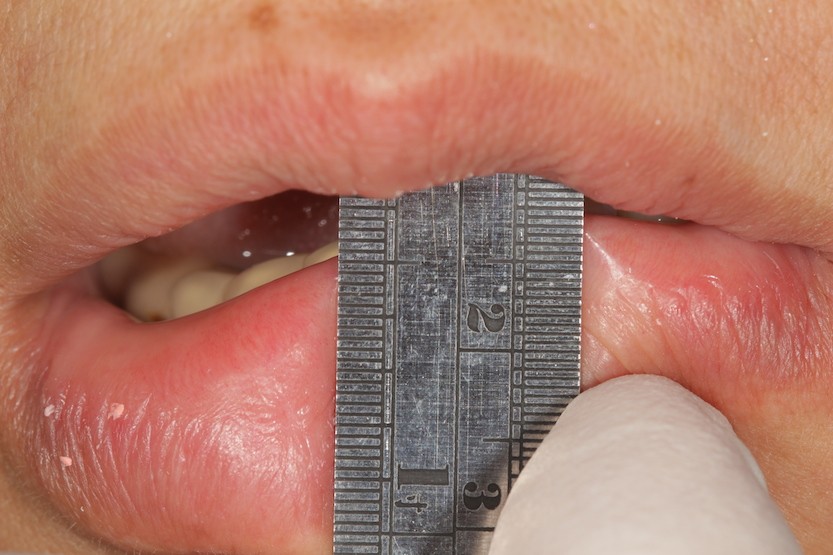
2. Record the esthetic reference plane:
3. Ensure that the esthetic reference plane has been faithfully reproduced onto an articulator: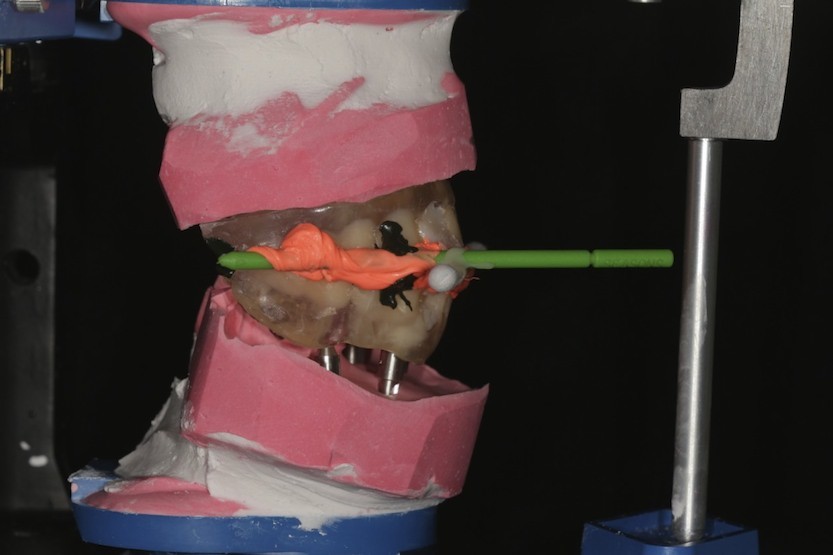
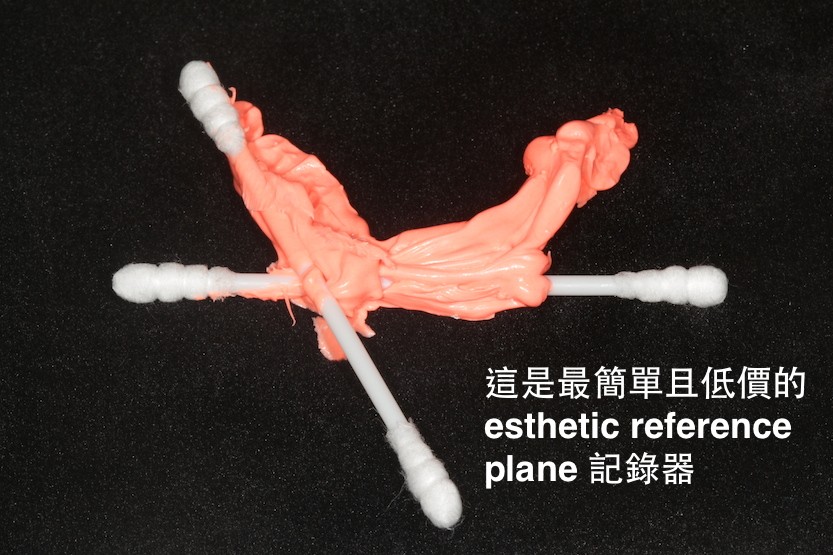
4. When arranging the teeth, take a 15~20° angle to set up the occlusal plane (recommended by this article):
5. Then you can easily and precisely produce a lovely smile arc.
This protocol assures that when viewer view from or above aesthetic reference plane (the reference horizontal when people are in an upright position), you will perceive a perfect smile arc. In other words, your all-on-4 clients will be seen mostly with a cheerful smiling wherever he/she goes. Isn’t that wonderful?
Passionately share this post with all my friends!
(End of this article)

No responses yet